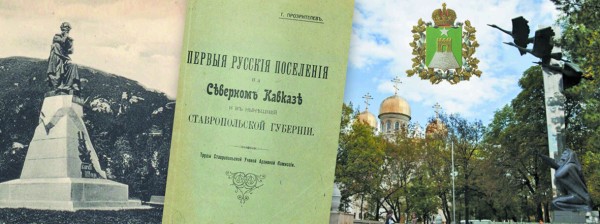Stavropol Territory: pages of history

The collection contains official documents, in particular the current Charter of Stavropol Territory, as well as the Laws of the State Duma of Stavropol Territory on the coat of arms and flag of the region. In addition, the collection includes studies, essays, reviews and reports, archival documents, visual materials that spotlight certain aspects of the socio-economic, socio-political and cultural development of Stavropol Territory in the 18th – second half of the 20th centuries.
The territory of Stavropol Territory began to be actively developed in the last third of the 18th century after the lands on the Black Sea coast became part of the Russian Empire following the results of the Kuchuk-Kainardzhi Peace Treaty and the construction of the Azov-Mozdok fortification line. At different times, certain parts of this region belonged to Astrakhan province, Caucasus Region, Terek province, and North Caucasus Region. Detailed information about the history of settlements in the region is available in such publications as “Collection of information about North Caucasus (historical, geographical, ethnographic, statistical, economic materials, etc.)” and “Stavropol in geographical, historical, topographical and statistical terms”.
The section “The Role of Stavropol Territory in the Foreign Policy of the State” features materials that shed light on the biographies of participants in the Caucasian War (1817–1864) (“Shamil in the city of Stavropol”) and the First World War (“In memory of the heroine of the duty of the sister of mercy Rimma Mikhailovna Ivanova”) in the context of the regional history of the region. The largest block of documents in this section is devoted to the life of the region during the Great Patriotic War. It contains mainly modern studies of socio-economic problems and everyday life during wartime, as well as photographs of monuments and memorials of Stavropol Territory.
An important place belongs to sources associated with the top officials of the state and representatives of the administration. For example, the collection includes archival documents that spotlight the procedure for celebrating the 300th anniversary of the House of Romanov in Stavropol province. The sources allow to analyze the activities of such Stavropol governors as A. A. Volotsky, G. K. Vlastov, N. E. Nikoforaki.
An important part of the collection consists of documents telling about the educational system of the region in pre-revolutionary times, for example, documents about the introduction of universal education in Svyatokrestovsky district or about the school network in Medvezhensky district. Valuable information about the history of Stavropol Territory is available in the materials of the First General Population Census of 1897, the All-Russian Agricultural Census of 1920 and the elections to the All-Russian Constituent Assembly. The collection also contains documents and studies that spotlight the development of library and museum work in Stavropol Territory during the Soviet period. Particular attention is paid to the history of the formation and description of the Caucasian Mineral Waters.




